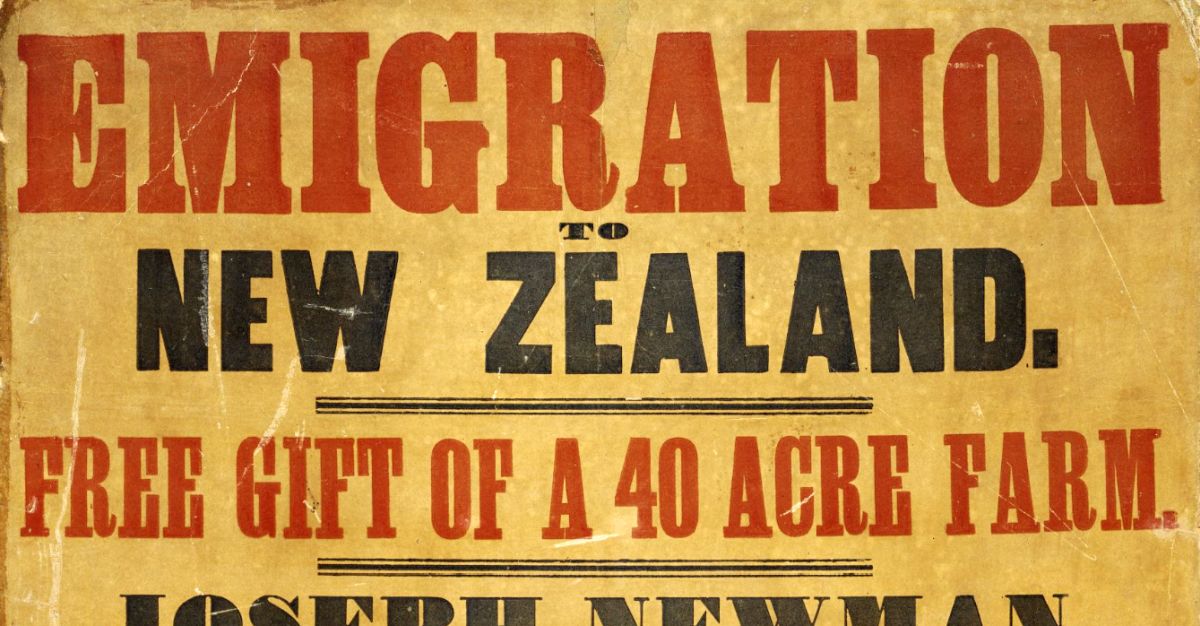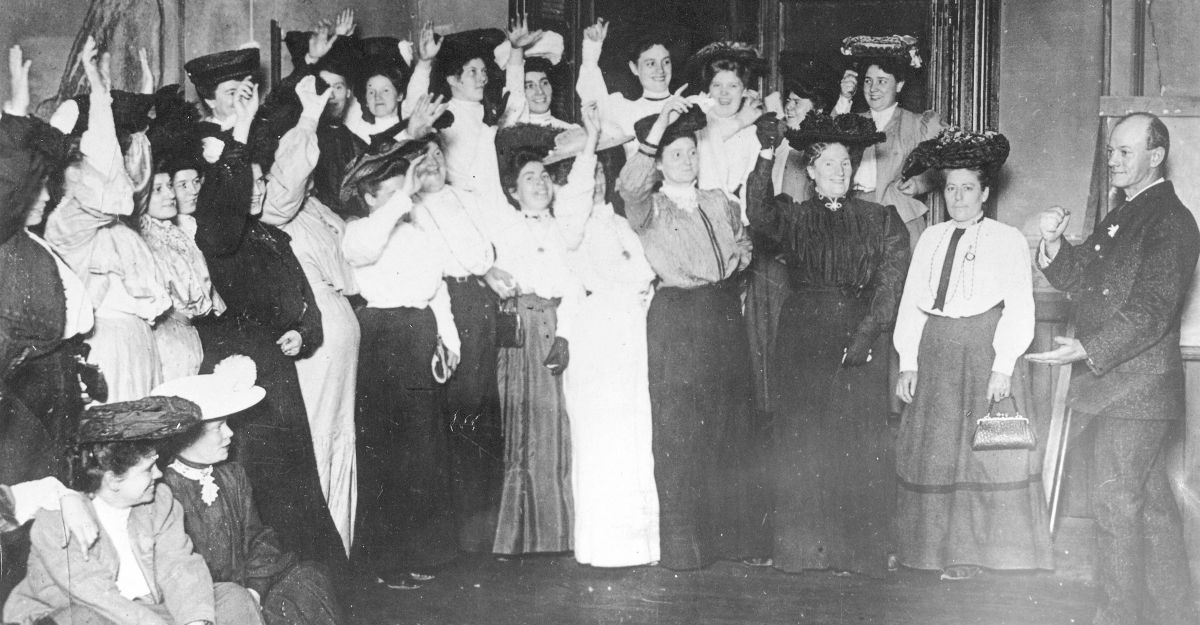On 29 July 1839, on Adam Street in London — just a stone’s throw from the River Thames — an unusual lottery took place at the headquarters of the New Zealand Company. 99,999 acres of Māori land in faraway Aotearoa had been advertised and sold. So on this day, a boy pulled lots out of tin boxes, deciding at random the order in which buyers would select their land. One-tenth of each section was said to be set aside by the New Zealand Company for the benefit of Māori. The Spectator described this “anxious moment as each lot came forth”.
The New Zealand Company had been set up a year earlier, in June 1838, by the New Zealand Association, an entity led by Edward Gibbon Wakefield, who had concocted a plan for “systematic colonisation” while serving time in prison for abducting a fifteen-year old girl. The New Zealand Association, in turn, had been granted a “royal charter” (a document signed by the monarch setting up an organisation and defining its purposes) in December 1837, enabling it to be the body establishing a British colony in Aotearoa.
There was at least one problem with the lottery that day in London. The New Zealand Company had not yet attempted to purchase any land in Aotearoa. In fact, New Zealand Company ships had not even yet arrived in the country. The company had simply assumed its entitlement to the land, based on the racialised legal doctrine of terra nullius (the view, roughly, that because land was not enclosed through private property, it belonged to no one) and the labour theory of property developed by writers such as John Locke, and driven by the imperative of making a profit.
*
The story of this fateful fusion of state backing, financial activity, capitalist imperatives, and racist ideology is told masterfully by Catherine Comyn in her new book, The Financial Colonisation of Aotearoa. The book has caused quite a splash in New Zealand writing circles in recent months. Despite being published by a small independent publisher (the thinktank Economic and Social Research Aotearoa), after its launch in July of last year it spent weeks on Unity Books Wellington’s bestseller list. Then, last month, it was longlisted in the General Non-Fiction category for the Ockham New Zealand Book Awards. The book deserves all of the plaudits it has received — and more.
The Financial Colonisation of Aotearoa begins by explaining its title. Comyn writes simply: “colonisation is financial, and finance is political”. In a scene-setting introduction that addresses the existing literature and the method of the book, Comyn sets out her intention to illuminate the contribution of finance to colonial violence. The book is interested in going beyond a focus on the British Crown or the role of colonial government, to analyse the connections between the state and finance in the enterprise of New Zealand colonisation.
The first chapter examines the unstable economic context of early nineteenth century Britain, writers such as Mill and Bentham and Wakefield who produced works of political theory that arose out of this context, and Britain’s wider financial-colonial empire. Attention then turns to the joint-stock company — of which the New Zealand Company is an example — and the jostling between the British government and the New Zealand Company to secure land in Aotearoa. Comyn traverses the ongoing pressure placed by the Company on the British government, the land speculation that was central to the “armchair colonialism” that was undertaken in Aotearoa, and the clashing concepts of space that were thrown up by the Company’s violent acquisition of land. Chapter five takes up the substantial bail-out of the New Zealand Company by the New Zealand government (needed because of its large accumulated debts), before Comyn examines how the right of pre-emption guaranteed by the English version of the Treaty of Waitangi (which allowed the government the first right of purchase of Māori land) and early Crown taxation practices resulted in Māori being forced to become significant funders of early settlement.
The final two substantive chapters highlight Māori financial and economic resistance. Here the author shows that the Native Land Court, long understood (through the work of David V Williams and others) as an institution that broke up collective Māori landholdings through the instrument of law, also had a credit dimension. Land had to be surveyed, creating debts, and Māori were also made indebted through lawyers, interpreters, hoteliers, and publicans that they had to engage with through the Native Land Court process. Māori ‘landowners’ had to apply to the Court to have their interests recognised, but this involved attending court hearings, sometimes for months at a time, often a great distance from Māori lands that were the subject of the hearings. This section showcases how Māori also mobilised credit, however, as part of building an anticolonial movement, with Te Peeke o Aotearoa being set up in 1885 by Tāwhiao, leader of the Kīngitanga, as a Māori bank with lending facilities that also acted as the storehouse of the Kīngitanga treasury.
Next, the book considers the 1880 Dog Registration Act, which taxed dog owners (many of whom were Māori) and aimed to bring dog owners within a Crown regulatory regime. It was this Act that prompted the Hokianga Dog Tax Rebellion of 1898 — in Comyn’s words, “a refusal to submit to colonial rule”. The conclusion gestures to wider literature on financialisation, and notes the ongoing relevance of the connection between the state and finance in the Treaty settlement process. Comyn demonstrates, drawing in particular on the fisheries settlement, that Treaty settlements have endeavoured to reduce tino rangatiratanga (the ultimate authority of Māori over their lands, villages, and all their treasures, guaranteed by Article 2 of Te Tiriti o Waitangi, the Māori text) to some degree of economic self-determination. Comyn observes that efforts to fully settle Treaty breaches can also be seen as futile and flawed attempts to close off Crown-Māori relationships once and for all, as opposed to efforts to honour the exchange of solemn promises set out in Te Tiriti o Waitangi.
*
In his thoughtful work, Onur Ulas Ince has written about the task of “rematerializing” the history of empire: in other words, connecting the history of empire to capitalism as a wider “institutionalised social order” (in Nancy Fraser’s words). This landmark book is engaged in a similar enterprise in relation to Aotearoa New Zealand. The Financial Colonisation of Aotearoa, like other great works of critical political economy, shows how developments previously regarded as purely “political” are also economic, and how “economic” developments are inescapably political. To take just two examples: Comyn draws out the economic dimensions of the Treaty of Waitangi (showing that the Crown right of pre-emption enriched the Crown and depleted Māori, so that it was a de facto capital gains tax, as Keith Hooper and Kate Kearins have argued), and shows that the efforts to tax dog-owners in 1880 were clearly political in the way they endeavoured to draw Māori within the colonial Crown regime.
The book has been published at a time when there appears to be resurgence in what could be called materialist accounts of Aotearoa New Zealand history — accounts that tie history to power, resources, class, and the broader political-economic order — including Jared Davidson’s The History of a Riot and Matthew Scobie and Anna Sturman’s soon-to-be-published The Economic Possibilities of Decolonisation. But while Comyn’s may not be the first materialist history of Aotearoa New Zealand, it is first-rate in the way that it deftly weaves together financial developments, theory, and legal and political events — in language that is consistently clear and crisp.
The book demonstrates how settler-colonial New Zealand was founded on a company, on property speculation, and on racist narratives that sustained such speculation. As a consequence, Comyn can show — with reference to specific, well-researched examples — how racism and capitalism have been intertwined in New Zealand’s history since colonisation, with capitalism driving the need for racist narratives, and those narratives making capitalism possible. Too often the “capitalism” in “colonial capitalism” is under-examined, but Comyn pays due attention to New Zealand’s particular political economy, especially in the nineteenth century — all in a slim 171 page book that packs a heavy punch. This is an instant classic, which complements other work on individuals, systems of thought, and political and legal developments in New Zealand’s history (such as Ned Fletcher’s magisterial The English Text of the Treaty of Waitangi), and should create its own ripples across history-writing and research agendas.
The Financial Colonisation of Aotearoa opens up space for further work on Māori economies and economic resistance, on possible reparative obligations of private sector financial institutions and agents in New Zealand (obligations that have been discussed for some time in the United Kingdom in relation to connections to slavery), and on how the New Zealand state in recent centuries has enabled a particular colonial and economic order.
The book is also poignantly pertinent to contemporary developments in New Zealand’s law, politics, and economy. In that warped lottery at New Zealand Company Headquarters in Adam Street, London, in 1839, an undertaking was made — and later repeated — that a tenth of each reserve plot of land would be set aside for Māori. In 2017 the Supreme Court of New Zealand found that historical interactions between the Crown and the New Zealand Company in relation to the “tenths reserve” in the Nelson settlement contributed to the Crown owing fiduciary duties to reserve 15,100 acres for Māori customary owners, and that those duties should be fully investigated in a further hearing. That case was heard last year and, as this review is being finalised, a decision is still awaited. The colonial capitalist rhythms set into motion by the New Zealand Company, and the Crown, in the nineteenth century continue to whir in the Aotearoa New Zealand of today. We should all be grateful to Catherine Comyn for describing those rhythms with such clarity and force.
Image: Te Ara



